17. Shot Dead in Funny Games
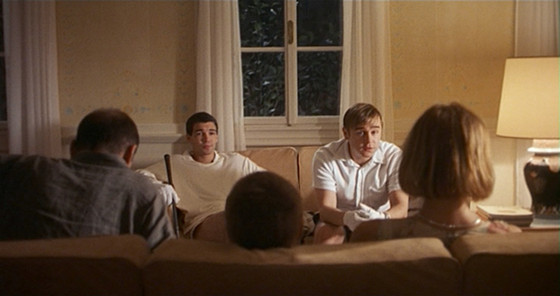
Michael Haneke has displayed his ability to truly shock audiences through nothing but masterful direction many times within his films. One of the standouts is from his 1997 psychological thriller about two young men who hold a family hostage and torture them with sadistic games. As a movie intended to be a deconstruction of the home invasion genre and its values, it should be no surprise that Haneke is able to subvert your expectations in such a spectacular and shocking way.
A scuffle breaks out off-screen in the summer home of Georg, played by Ulrich Muhe, and Anna, played by Susanne Lothar, while one of the invaders has gone into the kitchen. When Haneke’s camera returns to the lounge, it is revealed that their son Georgie has been shot dead.
It is such a brilliantly placed surprise not just for what it shows us at the moment of revelation, but what it does not show us in the build up to it. Not only does it leave our expectations open and ready for some kind of surprise, it acts as yet another way in which Haneke subverts the horror genre, screen violence could be so ubiquitous that Haneke felt the need to lecture us on our cinemagoing habits. The result is a magnificent shock that will stay with you long after the movie is over.
16. Suicide in Boogie Nights
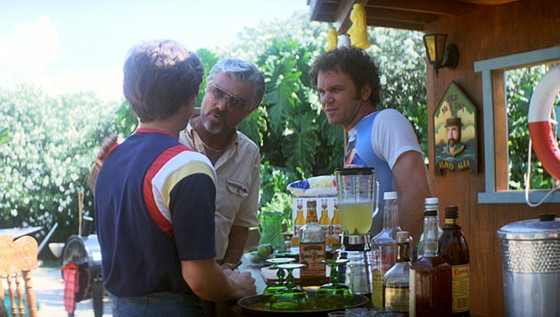
There are two deeply impressive tracking shots in Paul Thomas Anderson’s tale of fame and fortune set against the 1970s porn industry. The first is the terrific opening shot that introduces us to this world of glitz and glamour, but our favourite comes later in the movie which exposes the far uglier side and in terrifying fashion. At a New Year’s eve party marking the year 1980, Little Bill (William H Macy) searches for his wife, finds her sleeping with another man yet again, walks back to his car and then murders her.
The shot is masterful in its organisation for starters, relaying numerous characters and cramming them all into one little set piece. But of course the first shot does that as well, and shows us everything, this one on the other hand is brilliant for what it does not show us. We know something is troubling Bill as the camera continues to follow him put each revelation comes so slowly that it builds an endless stream of suspense as it unfolds.
What is even more surprising is that as an audience we don’t even realise it is happening. Despite everything we know about each character, we could probably have predicted what Bill’s wife would be doing by his point, what we would not have guessed was his reaction. However Anderson’s camera is able to build palpable suspense, leaving us to dread what exactly his reaction is going to be, until the final gunshot as Bill turns the weapon on himself.
15. Stuck in the Middle With You in Reservoir Dogs
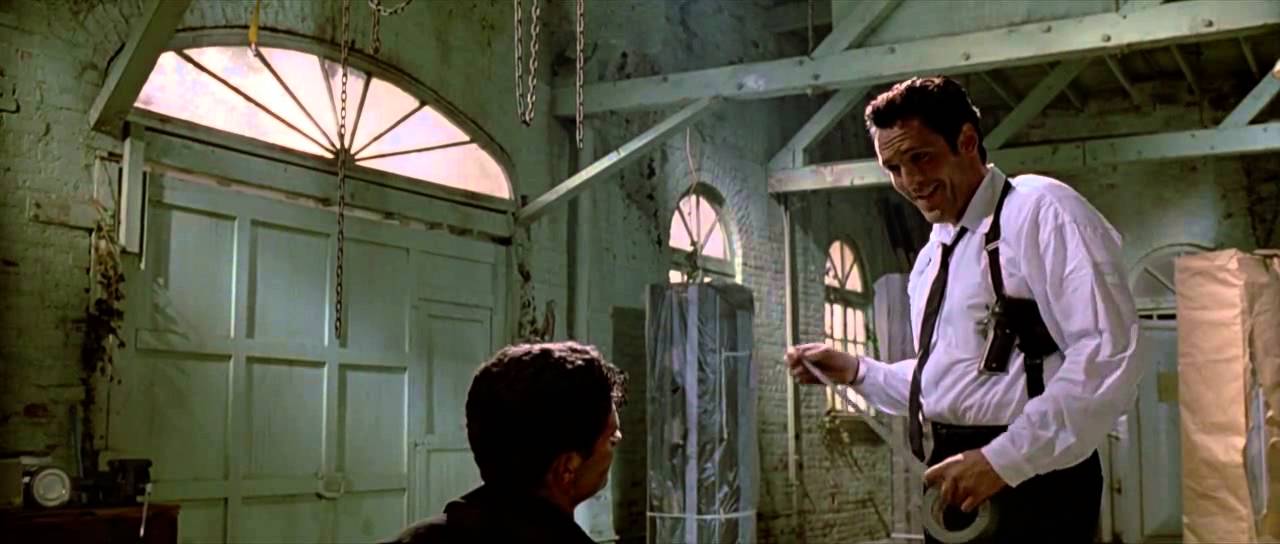
The moment that forever cemented Quentin Tarantino into the film industry, even if he never made another movie after Reservoir Dogs, there is a high chance he would still be remembered just for this scene alone. His unique blend of violence, high energy, suspense and music all in one scene created one of the most memorable and shocking movie scenes of the decade.
There are so many elements of the scene that work perfectly, from the movement of the camera to Michael Madsen’s dance moves, everything serves to make it an astonishing display of filmmaking.
Now left alone with a captured cop, Mr Blonde tortures the officer to the tune of Stuck in the Middle with You. Now beside the obvious and ironic way in which the song sums up the situation, it is remarkable how the upbeat and casual song is made to evoke dread and suspense as the sadistic criminal dances around in glee. But it’s the casual nature of that dancing that makes it even worse, almost reassuring you that this man has no issues with committing the most hideous of acts. If anything he seems to enjoy it.
The fact that the camera pans away for the fateful ear amputation lets your imagination wreak havoc with your expectations and Tarantino employs this again when Mr Blonde makes his way outside of the warehouse to his car. All the while we are formulating our own ideas of what he is about to pull out, and when he does it is even worse than we could have imagined.
14. The Red Coat in Schindler’s List
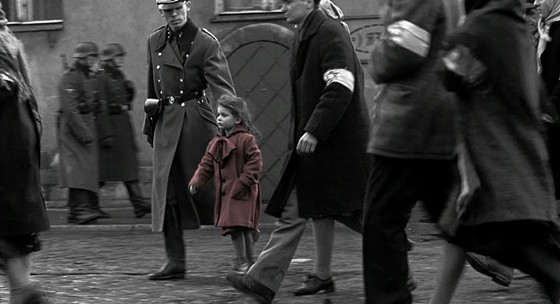
Spielberg’s long in the works passion project about Oscar Schindler, the German businessman who helped thousands of Jews escape the holocaust, features many heartfelt and haunting scenes. But out of all of them the best could be the turning point of the movie, the girl in the red coat. With just a single image Spielberg evokes so many emotions and acts as a major turning point for the development of the titular character.
While the film is shot primarily in black and white, a red coat is used to distinguish a little girl in the scene depicting the liquidation of the Kraków ghetto. It is the moment in which Schindler witnesses the horrors of the holocaust up close, when he views the innocent lives lost and is forced to confront the notion that no one is safe from the ongoing genocide.
The poingiant and haunting beauty of the moment is astonishing to behold. The rare splash of colour is a simple yet effective method of highlighting the small figure wandering through the death and destruction around her.
For Spielberg it meant even more than a nice shot or defining character moment, the girl in red was meant to serve as a political allegory for the millions of people who turned their backs to the atrocities they knew were being committed.
That only makes it all the more meaningful when a simple of that act causes a man to turn around and face those atrocities had on rather than run away from them. The massive scale of the shot is even more disturbing and masterful, highlighting the sheer scale of the horror in a way only Spielberg could.
13. Opening Shot in The Player
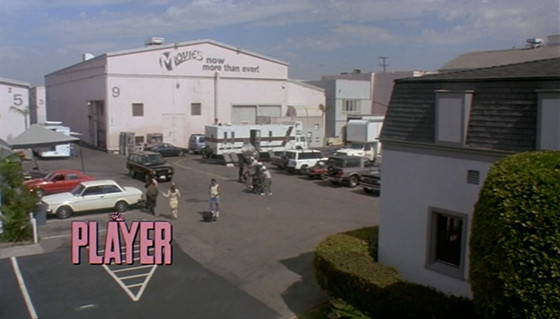
Robert Altman’s hilarious satire of the Hollywood industry that follows a studio executive who receives death threats as he struggles to maintain his career, relationships and well being. The sweeping title sequence that opens the film is a gargantuan tracking shot that clocks in at just under eight minutes.
It manages to introduce every major character and subplot in fine style and does so in such an elegant and subtle fashion that upon its initial release numerous audiences complained about not being able to follow each plot thread.
But of course that was exactly what Altman wanted. The man who had forged a career out of challenging his audiences while juggling massive ensemble casts was not going to go easy on viewers just because this was advertised as a comedy. He intended for audience members to sit up and pay attention to what was happening in front of them and the numerous conversations that outline the plot, all of which were improvised by the way, do this perfectly.
It’s also such a meticulously choreographed shot. Going from within the executive offices, onto film sets and across the exterior of the complex it even manages to comment upon itself in the process, becoming brilliantly Meta as it does so. In one of the most brilliant moments of self-referential humour an executive comments upon the MTV style of movies and their overreliance on editing. It is pure cinema both in its subject matter and the method of filmmaking.
12. Hospital Shootout in Hard Boiled
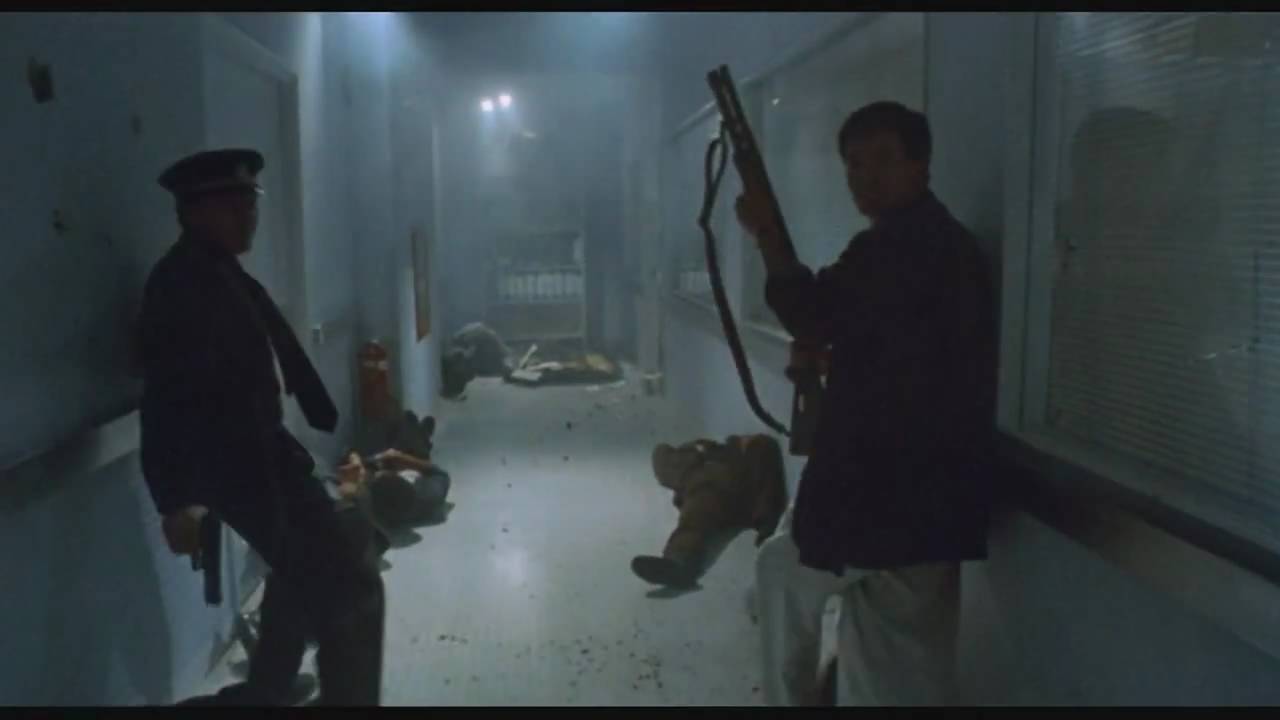
John Woo’s career contains a number of deeply impressive shootouts and action set pieces but perhaps the best display of his directorial brilliance is the chaotic, stylish and visceral hospital shootout from Hard Boiled. Having crafted so many movies about the criminal proceedings, Woo wanted to showcase the work of the police force that oppose that crime, obviously in his usual over the top, flamboyant and undeniably awesome way though.
Following, plays by his own rules, cop Tequila as he tries to take down a crime syndicate, eventually finding himself squaring off with the mob in a hospital as he tries to rescue new-borns and innocents from them. The two minute long take captures the action in a superbly choreographed and stylised way, making the gunfire look almost eloquent. The fluidity of the scene makes it all the more engrossing as the two cops clear wave after wave of bad guys from the narrow and claustrophobic corridors.
There are plenty of inventive methods on display as well. At one point the two heroes go into what looks like an elevator and appear to come out on another floor. However, in reality they are just standing behind a set of closed doors while a group of stage hand reassemble and redress the set they were already on to create the illusion of it being a new floor. What follows is another display of expertly constricted action that cements this scene as a classic.
11. Choose Life in Trainspotting
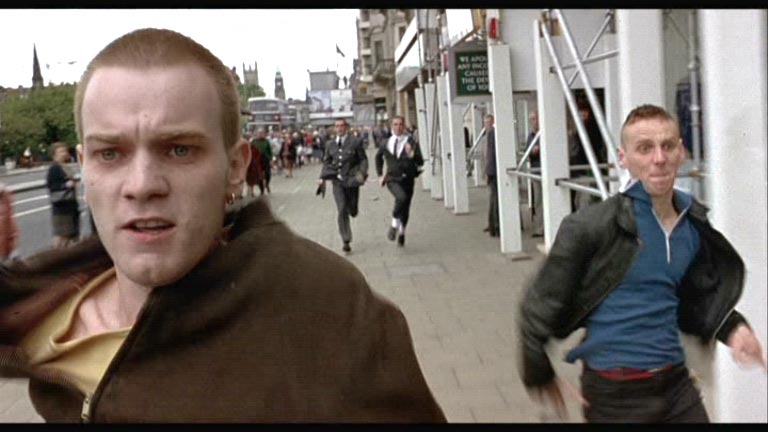
Great opening scenes are designed to really throw you into the movie. They can be invigorating, electrifying and energetic all while providing you with an overview of just what you are about to let yourself in for with Trainspotting. Danny Boyle’s adaptation of Irvine Welsh’s novel about a group of young heroin addicts in the heartland of Scotland, a culturally rich yet urbanely sparse land, is a pulsating and energetic fable and that is made instantly obvious from this opening scene.
It opens with two of the films main characters, Renton and Spud, running from the police after being caught shoplifting. The images of their escape are intercut with their daily activities, from football matches to their heroin injections.
But it goes beyond just explaining what kind of world these characters inhabit, if you look closely at the football match it uses the actions of each character on the field to reflect their personality, Spud trying his best but ultimately failing, Sick Boy who tries to skirt around his problems as opposed to confronting them, Begbie’s aggressive and temperamental nature, Tommy being overcome by the world around him and Renton paying the price for other people’s actions.
Then of course we have that famous opening monologue and while it doesn’t justify the characters use of heroin it does provide the audience with the perfect insight into their mind set and their attitude towards the world around them. The montage it quick, fast paced and oddly insightful. The more and more you listen to Renton’s reasoning, the more you begin to understand it.
10. Opening Scene in Flowers of Shanghai
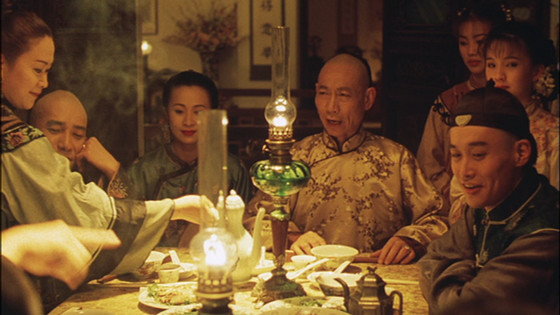
So many directors employ the use of long shots to open their films that we would be remised if we did not give a shout out to the longest and most beautiful of them all. More of a feat of staging and unbroken performance than anything else, as well as the superb lighting and cinematography, this spot goes to the opening shot of Flowers of Shanghai.
The 1998 Taiwanese film directed by Hou Hsiao-Hsien opens with a nine minute long scene, beautifully illuminated by oil lamps and pans back and forth between multiple characters placed around a table in a Chinese brothel. In a film that will follow many separate stories revolving around the brothel and its occupants this scene perfectly captures the dynamic and relationship of the party.
As well as that it is a masterclass of unbroken performance, staging and restraint as the shot does not force the narrative to take place, instead it pans across the interactions of each character, giving the film a very natural and interpretative feel to it.
The direction also has a somewhat claustrophobic feel to it, to make the characters feel almost trapped within their environment, giving the scene a sense of invigoration and energy when it needs to be. But at the same time of course it can be just as calm and meditative, making it truly magnificent.
9. Bank Shootout in Heat
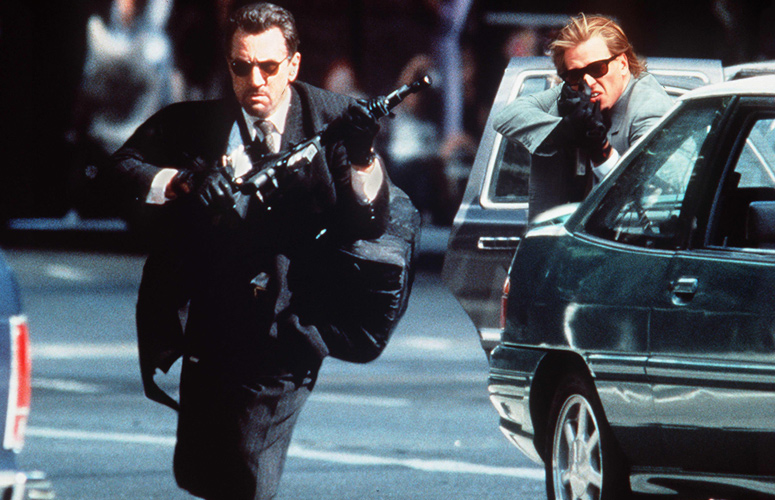
Not just the greatest shootout of the decade but quite possibly the greatest of all time. That may seem like an overstatement but when you consider the amount of movie gunfights that only convey one aspect of what the shootout from Heat does you begin to appreciate it more and more. It is chaotic yet organised, bombastic yet intimate, complex and also deceptively simple.
There is not a point where you feel confused or disorientated, you know where each character is and their dynamic, but not so much that you ever feel in control, you are watching these events spiralling out of control and are concerned for each character as a result.
You also have the realism of the battle, making it more gritty and realistic than any other shootout in movie history. Michael Mann put his actors through rigorous training programmes in order to prepare for the scene, training with actual professional from both sides of the law. He even built a full scale replica of the street on the shooting range and mapped out the whole sequence from there.
The scene is also praised for its sound design. Where many films add the sounds of gunshots and ricochets in post production Mann chose not to include it. There was at one point a version with the added post production sound but when Mann listened to it, he hated it, threw it all out and went with the sound they had recorded directly on set and we are very glad he did. The sound is massive and terror inducing, adding to the raw and visceral nature of the scene as well as its authenticity.